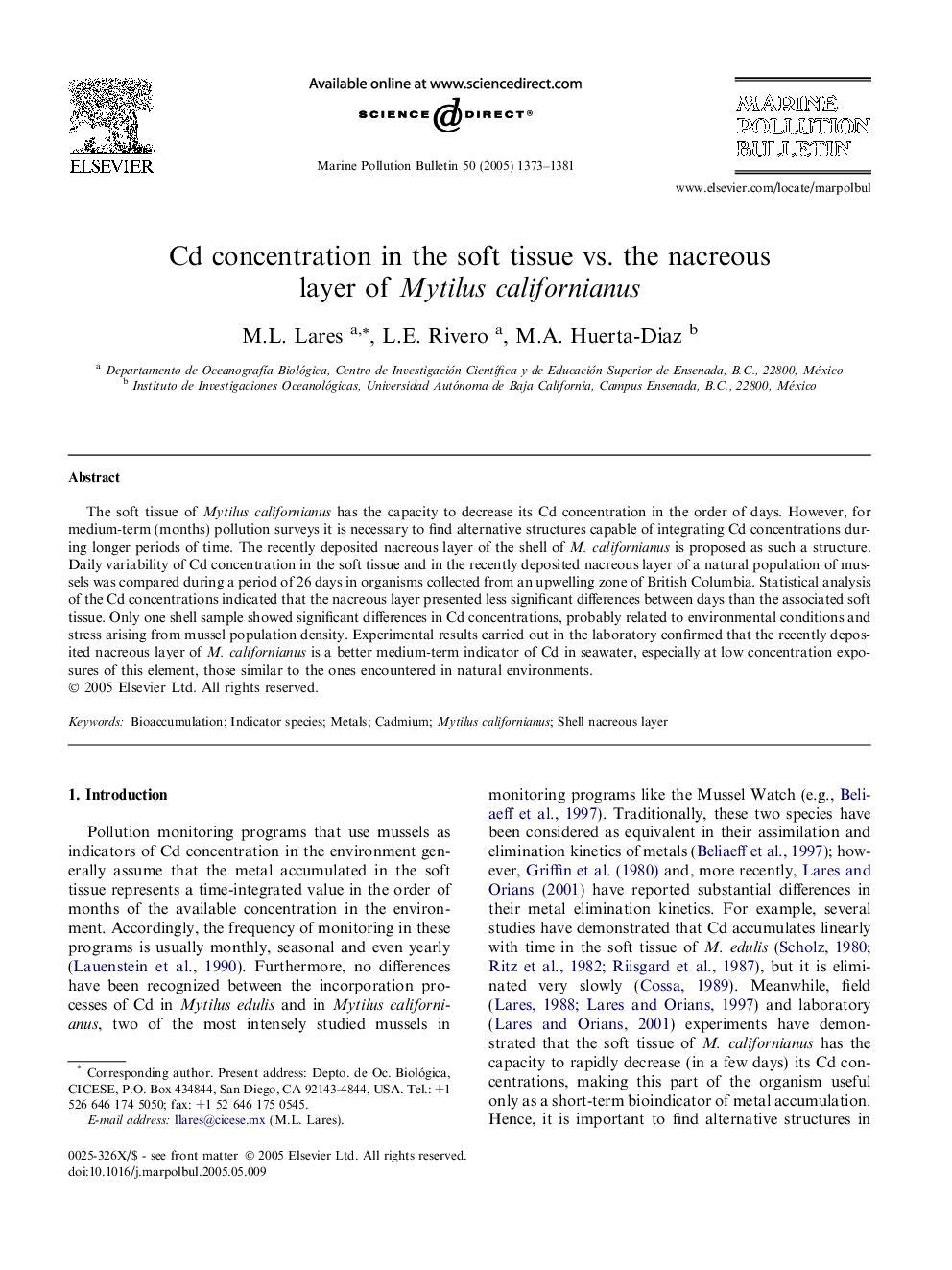| Article ID | Journal | Published Year | Pages | File Type |
|---|---|---|---|---|
| 9466008 | Marine Pollution Bulletin | 2005 | 9 Pages |
Abstract
The soft tissue of Mytilus californianus has the capacity to decrease its Cd concentration in the order of days. However, for medium-term (months) pollution surveys it is necessary to find alternative structures capable of integrating Cd concentrations during longer periods of time. The recently deposited nacreous layer of the shell of M. californianus is proposed as such a structure. Daily variability of Cd concentration in the soft tissue and in the recently deposited nacreous layer of a natural population of mussels was compared during a period of 26 days in organisms collected from an upwelling zone of British Columbia. Statistical analysis of the Cd concentrations indicated that the nacreous layer presented less significant differences between days than the associated soft tissue. Only one shell sample showed significant differences in Cd concentrations, probably related to environmental conditions and stress arising from mussel population density. Experimental results carried out in the laboratory confirmed that the recently deposited nacreous layer of M. californianus is a better medium-term indicator of Cd in seawater, especially at low concentration exposures of this element, those similar to the ones encountered in natural environments.
Related Topics
Physical Sciences and Engineering
Earth and Planetary Sciences
Oceanography
Authors
M.L. Lares, L.E. Rivero, M.A. Huerta-Diaz,
